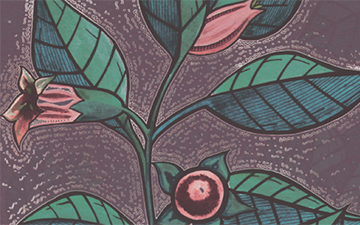Atropa belladonna or Atropa bella-donna, commonly known asbelladonna or deadly nightshade, is a perennial herbaceous plant in the family Solanaceae, native to Europe, North Africa, Western Asia, and some parts of Canada and the United States. The foliage and berries are extremely toxic, containing tropane alkaloids. These toxins include scopolamine and hyoscyamine, which cause a bizarre deliriumand hallucinations,[1] and are also used as pharmaceuticalanticholinergics. The drug atropine is derived from the plant.
It has a long history of use as a medicine, cosmetic, and poison. Before the Middle Ages, it was used as an anesthetic for surgery; the ancient Romans used it as a poison (the wife of Emperor Augustusand the wife of Claudius both were rumored to have used it for murder); and, predating this, it was used to make poison-tipped arrows. The genus name Atropa comes from Atropos, one of the three Fates in Greek mythology, and the name “bella donna” is derived fromItalian and means “beautiful lady” because the herb was used in eye-drops by women to dilate the pupils of the eyes to make them appear seductive.[2][3]
(From Wikipedia, June 2015)





